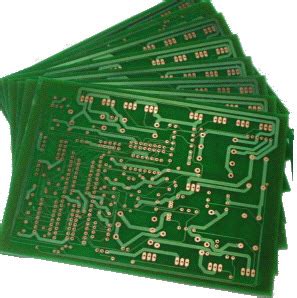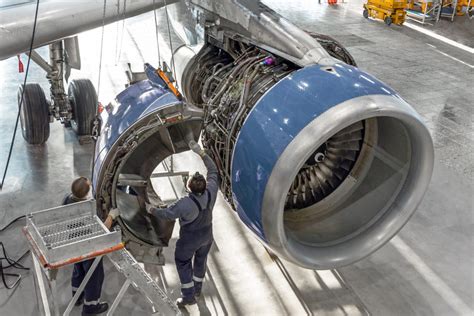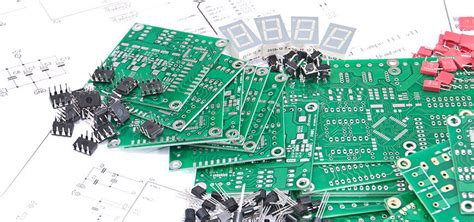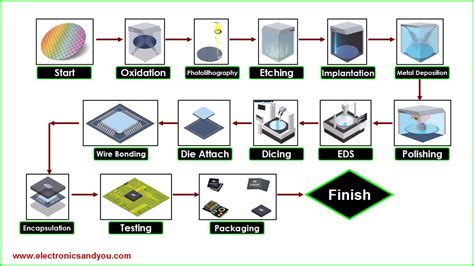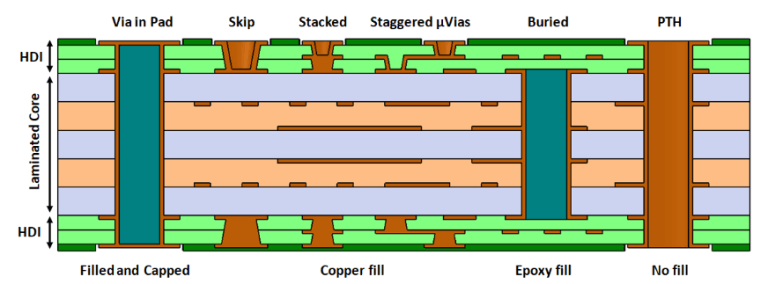Mastering Innovation: The Art of Assembled Printed Circuit Boards
Key Takeaways
In the realm of pcb assembly, understanding the nuances of the process is essential for industry practitioners. Achieving excellence in pcba requires a comprehensive grasp of various components, including design precision and material integrity. The integration of innovative materials has enhanced the performance and durability of printed circuit boards, making them more adaptable to the evolving demands of modern technology. Moreover, advanced techniques in pcb assembly processes have significantly improved production efficiency while minimizing errors. Industry experts emphasize that maintaining meticulous attention to detail can lead to groundbreaking developments in electronics. Case studies highlight how successful applications of pcba have propelled companies to new heights, demonstrating that leveraging cutting-edge practices in PCB assembly not only boosts reliability but also fosters innovation across various tech sectors. To thrive in this competitive landscape, embracing these key aspects is crucial for any organization seeking to master the art of assembled printed circuit boards.
Introduction to Printed Circuit Board Assembly
The world of pcb assembly plays a crucial role in the electronics industry, forming the foundation upon which modern technologies are built. Essentially, this process involves the integration of various electronic components onto a printed circuit board (PCB), which serves as the vehicle for both electrical connections and mechanical support. Understanding how these boards are assembled is not only vital for engineers but also for anyone interested in how their devices function.
A successful pcba process is characterized by attention to detail; even minor misalignments can lead to significant performance issues. The precision required during this assembly stage cannot be overstated. It encompasses not only the accuracy of component placement but also the quality of soldering techniques employed. “Precision is not just a word in electrical engineering; it’s a commitment to excellence,” says industry expert Dr. Jane Liu.
Moreover, as technology continues to advance, so too do the methods and materials used in pcb assembly. From standard FR-4 substrates to flexible circuit designs, innovative materials enhance functionality while meeting specific application needs. Embracing these changes means that manufacturers can adapt to technical demands with greater agility, ultimately leading to higher reliability and performance in finished products.
Emphasizing best practices in pcb assembly is essential for achieving long-term success in various technological fields, making it a dynamic area of focus for ongoing research and innovation. The deeper one delves into this field, the greater their appreciation becomes for its complexity and importance within the broader context of electronics manufacturing.
The Importance of Precision in PCB Design
In the realm of pcb assembly, precision is not just a luxury; it is an absolute necessity. The intricate nature of printed circuit board (PCB) design demands that every component be placed with exactitude to ensure functionality and durability. A single misalignment can result in failure, leading to costly delays and increased production times. Therefore, a meticulous approach during the initial stages of design is crucial. Key aspects such as trace width, spacing, and layer stacking must be calculated with precision to maintain signal integrity and avoid interference.
The advent of advanced computer-aided design (CAD) tools has revolutionized pcb assembly, enabling engineers to simulate circuits before physical assembly. This proactive strategy mitigates errors and enhances the reliability of the final product. Incorporating real-time feedback during the design phase allows for dynamic adjustments, which further refines the quality of the end result.
Material selection also plays a pivotal role, as different materials possess distinctive properties affecting thermal management and electrical performance. The compatibility between selected materials and operational conditions must be carefully considered during PCB design to foster optimal performance in varied applications.
As we continue to innovate within technology sectors, understanding the critical importance of precision in pcba will drive advancements not only in design but also in manufacturing processes. As such, a commitment to excellence in every stage of printed circuit board assembly is essential for achieving high performance and unwavering reliability across all electronic devices.
Innovative Materials in PCB Manufacturing
The evolution of pcb assembly has been significantly influenced by the emergence of innovative materials that enhance the overall performance and efficiency of printed circuit boards. Materials such as high-frequency laminates, flexible substrates, and low-loss dielectrics are leading the charge in optimizing signal integrity and reducing power loss in electronic devices. The introduction of polyimide for flexible applications allows manufacturers to create designs that not only meet rigorous electrical requirements but also withstand extreme environmental conditions. Additionally, advancements in conductive inks have revolutionized the way we approach printed electronics, enabling the development of PCBA processes that are more cost-effective and environmentally friendly. Furthermore, the use of thermally conductive materials provides efficient heat dissipation, crucial for high-performance applications in sectors such as automotive, telecommunications, and consumer electronics. By integrating these innovative materials into their processes, manufacturers are not only enhancing the reliability and lifespan of their products but also paving the way for future innovations within the industry, solidifying their role as leaders in modern technology.
Advanced Techniques in PCB Assembly Processes
In the realm of PCB assembly, embracing advanced techniques is essential for meeting the growing demands of modern electronics. The integration of automated processes and precision machinery plays a pivotal role in enhancing the efficiency and accuracy of PCBA. Techniques such as laser soldering, pick-and-place automated systems, and 3D printing for rapid prototyping are revolutionizing how assembled printed circuit boards are produced. By utilizing surface mount technology (SMT), manufacturers can achieve a higher density of components on a board while ensuring improved performance, reduced signal interference, and overall reliability. Furthermore, flexible PCBs are gaining traction due to their versatility in applications ranging from wearable technology to automotive systems. Precision is non-negotiable; thus, implementing advanced inspection methods such as Automated Optical Inspection (AOI) allows for early detection of defects, ensuring high-quality outcomes in the PCB assembly process. As industries continue to evolve, staying at the forefront of these innovative methods will not only enhance the performance of electronic devices but also secure a competitive advantage in a rapidly changing market landscape.
Case Studies: Success Stories in PCB Applications
In the realm of PCB assembly, numerous organizations have made significant strides in optimizing their processes and enhancing product reliability through innovative practices. One noteworthy success story is that of a telecommunications company that employed advanced PCBA techniques to improve signal integrity in its latest smartphone model. By integrating high-frequency materials and employing precise assembly techniques, the company achieved a 30% reduction in signal loss, directly enhancing user experience. Another example is found in the automotive industry, where a manufacturer revamped its pcb assembly processes to incorporate automated optical inspection (AOI) systems. This innovation not only minimized human error but also streamlined production time by 20%, ultimately leading to safer and more reliable vehicles on the market. Additionally, a prominent medical device company showcased how mastering PCBA contributed to the development of a life-saving diagnostic tool. By utilizing flexible circuit technology and rigorous testing protocols, they ensured high performance and durability, resulting in devices that consistently met healthcare standards across various environments. These case studies illustrate that successful applications of printed circuit board assembly are pivotal for pioneering advancements across diverse sectors, reinforcing the importance of quality and innovation in modern technology solutions.
Challenges and Solutions in Modern PCB Assembly
In the dynamic arena of pcb assembly, manufacturers face numerous challenges ranging from increased complexity in designs to the necessity for rapid production cycles. As products become more sophisticated, the demand for smaller, more powerful devices has necessitated advancements in pcba technology. This has given rise to intricate designs that require new approaches to assembly and testing.
One significant challenge is ensuring the reliability of components within a densely populated board. With surface mount technology (SMT) becoming a standard, components are much smaller and closer together, leading to increased risk of errors during assembly. To combat this, manufacturers are adopting automated inspection systems that utilize machine vision to detect issues at various stages of production. This not only enhances accuracy but also significantly reduces the time spent on quality assurance.
Another issue is the selection of appropriate materials that align with the specific requirements of modern electronics. The evolving nature of consumer demands necessitates a thorough understanding of both traditional and innovative materials used in pcb assembly processes. Implementing materials that offer better thermal performance or enhanced electrical properties can lead to improved product longevity and performance.
A table illustrating common challenges alongside their respective solutions is provided below:
| Challenge | Solution |
|---|---|
| High complexity in designs | Implementation of advanced simulation tools |
| Reliability issues | Use of automated inspection technologies |
| Material compatibility | Focus on research for innovative materials |
| Need for rapid production cycles | Integration of flexible manufacturing systems |
| Environmental compliance | Adoption of green manufacturing processes |
Navigating these challenges requires a comprehensive strategy that involves not just innovative techniques but also collaboration with suppliers and adherence to evolving industry standards. By addressing these obstacles head-on, manufacturers can enhance their capabilities in pcba and propel their products into a future rife with possibilities.
The Future of Printed Circuit Board Technology
As we look ahead, the landscape of printed circuit board (PCB) technology is set for transformative advancements. The realm of pcb assembly is evolving rapidly, fueled by innovations in connectivity, miniaturization, and integration of advanced electronics. PCBA processes will increasingly incorporate automation and artificial intelligence, enhancing efficiency and accuracy while reducing labor costs. This shift not only promises improved quality in the assembly line but also allows for a more scalable production process that can adapt to varying demands across industries. Additionally, the increase in demand for flexible PCBs in wearable technology and Internet of Things (IoT) devices points to a future where traditional rigid designs give way to more dynamic solutions that can adapt to unique shapes and environmental conditions. Alongside this evolution will be an emphasis on sustainability, encouraging manufacturers to adopt eco-friendly materials and practices in their pcb assembly processes. With such developments on the horizon, mastery in pcb assembly will become even more crucial, empowering companies to stay competitive while meeting the ever-evolving needs of modern technology applications.
Conclusion: Mastery in PCB Assembly and Its Impact on Technology
In conclusion, the mastery of pcb assembly—often referred to as PCBA—is pivotal to the sustainability and advancement of modern technology. The intricate dance of design, material selection, and manufacturing processes not only demands precision but also fosters an environment ripe for innovation. As we navigate through the complexities of PCB technologies, it becomes abundantly clear that each step in the pcb assembly process contributes significantly to the overall performance and reliability of electronic devices. The innovations in this field reflect a commitment to enhancing functionality while addressing various challenges that arise during production. Furthermore, successful case studies underscore how effectively executed pcba can lead to substantial improvements in diverse applications, from consumer electronics to biomedical devices. By embracing cutting-edge techniques and remaining agile amidst ever-evolving industry demands, it is evident that those who achieve mastery in PCB assembly will not only set the standard for excellence but also play a crucial role in shaping future technological advancements.
Conclusion: Mastery in PCB Assembly and Its Impact on Technology
The journey toward mastering pcb assembly is not merely technical; it embodies a commitment to constant innovation that fuels advancements in technology. As we’ve explored throughout this article, the meticulous processes involved in pcba ensure that every component operates flawlessly within its designated framework, enhancing overall device performance. The significance of precision cannot be overstated; it is the linchpin that connects design to functionality. Furthermore, the exploration of innovative materials and advanced techniques in pcb assembly signifies a forward-thinking approach that will shape the electronics landscape. The success stories showcased not only illustrate real-world applications but also emphasize the transformative potential of effective pcba practices. As industries embrace these cutting-edge methodologies, we foresee a future where the mastery of printed circuit board assembly will continue to drive technological progress and foster unprecedented reliability and efficiency in electronic devices. In this rapidly evolving environment, mastering pcb assembly will remain crucial for competitive advantage and sustainability in various tech fields.
FAQs
When delving into pcb assembly and its nuances, several common questions arise among industry professionals and enthusiasts alike. One frequent inquiry pertains to the essential steps involved in the pcba process. Understanding the intricate flow from design to production is crucial, as each stage demands a high degree of precision. Another often-asked question centers on the materials used during assembly; choices like FR-4, polyimide, and specialized dielectric layers can significantly influence performance and reliability. Furthermore, individuals frequently seek clarity on how advancements in technology are reshaping pcb assembly methods. The integration of automated systems and high-precision machinery does not only enhance efficiency but also minimizes human error, which is vital in maintaining quality standards.
Many also wonder about the impact of environmental factors on the performance of assembled printed circuit boards. Given that thermal management plays a pivotal role in electronic longevity, it’s essential to consider this aspect during both design and assembly stages. Lastly, professionals often inquire about best practices that companies can adopt to stay competitive in an ever-evolving market; continuous training and adherence to industry standards are paramount in ensuring quality outcomes.
For those looking to deepen their understanding of pcb assembly processes and explore innovative options available today, we encourage you to deepen your knowledge by accessing more resources.

